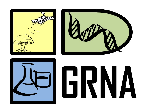Banca de DEFESA: RÔMULO SARMENTO BARBOSA
Uma banca de DEFESA de MESTRADO foi cadastrada pelo programa.STUDENT : RÔMULO SARMENTO BARBOSA
DATE: 15/03/2023
TIME: 10:00
LOCAL: Sala H303, prédio H do Campus Rondon da UFOPA
TITLE:
PURIFICATION AND BIOLOGICAL CHARACTERIZATION OF A PEPTIDE WITH INSECTICIDAL ACTIVITY FROM THE VENOM OF THE SCORPION Rhopalurus amazonicus LOURENÇO 1986 (BUTHIDAE)
KEY WORDS:
Chromatography, Insecticidal peptides, Rhopalurus, Ultrafiltration.
PAGES: 52
BIG AREA: Outra
AREA: Ciências Ambientais
SUMMARY:
Scorpion venom has been studied mainly for its peptides that act on ion channels. Four decades ago, studies began to be published on the identification of scorpion peptides that have an insecticidal effect. So far, peptides of anti-insect activity have been found in Old World scorpions and in American scorpions belonging to the genera Tityus and Centruroides. From the Rhopalurus genus, isolated from the Cuban scorpion R. junceus, there is only one report on the purification and characterization of a toxin with action on insects. In Brazil, Rhopalurus species are distributed in the North and Northeast regions. This work aimed to isolate an anti-insect peptide toxin from the venom of R. amazonicus, a scorpion endemic to the Amazonian savannah, in the western region of the State of Pará, Brazil, using three steps of purification monitored by an insecticidal bioassay. The crude venom was solubilized in 50 mM ammonium acetate, pH 5.0 and centrifuged at 9500 x g, 8 ºC, for 10 min and the pellet was discarded. The first purification step consisted of passing the sample through a 10 kDa membrane, using an Amicon® ultrafiltration cell. The filtrate was collected until no peptide could be detected by absorbance at 280 nm. In the second step, the filtrate was subjected to anion exchange chromatography on a Mono-Q column, obtaining the cationic fraction of the sample. Finally, the anti-insect toxins were purified by reverse phase HPLC on a Thermo Scientific C18 column (4.6 x 250 mm) using 0.12% trifluoroacetic acid in water (buffer A) and 0.1% trifluoroacetic acid in acetonitrile (buffer B). The peaks were eluted in a linear gradient from 0 to 60% Buffer B over 60 minutes with a flow rate of 1 ml/min. A cationic peptide, named Ramaz-1, with lethal anti-insect activity, against Gryllus assimilis, was purified and its LD50 estimated as 1.04 ± 0.26 µg/g (n=3). Mass spectrometry analysis confirmed the purity of the anti-insect toxin R. amazonicus with a molecular mass of 7909 Da. The present study corroborates information in the scientific literature that the toxins from smaller scorpions are relatively more potent than those from larger scorpions, given that this species is considered medium-sized. However, of the scorpions with isolated peptides, this animal is notoriously small and has a relatively more potent insecticidal toxin than other toxins described for New World scorpions. This is the first report describing the isolation and characterization of an anti-insect peptide from the venom of R. amazonicus.
COMMITTEE MEMBERS:
Interno - 1963026 - ANDERSON ALVARENGA DE MOURA MENESES
Presidente - 1684515 - JOACIR STOLARZ DE OLIVEIRA
Externo à Instituição - JUAREZ DE SOUZA - UEPA




